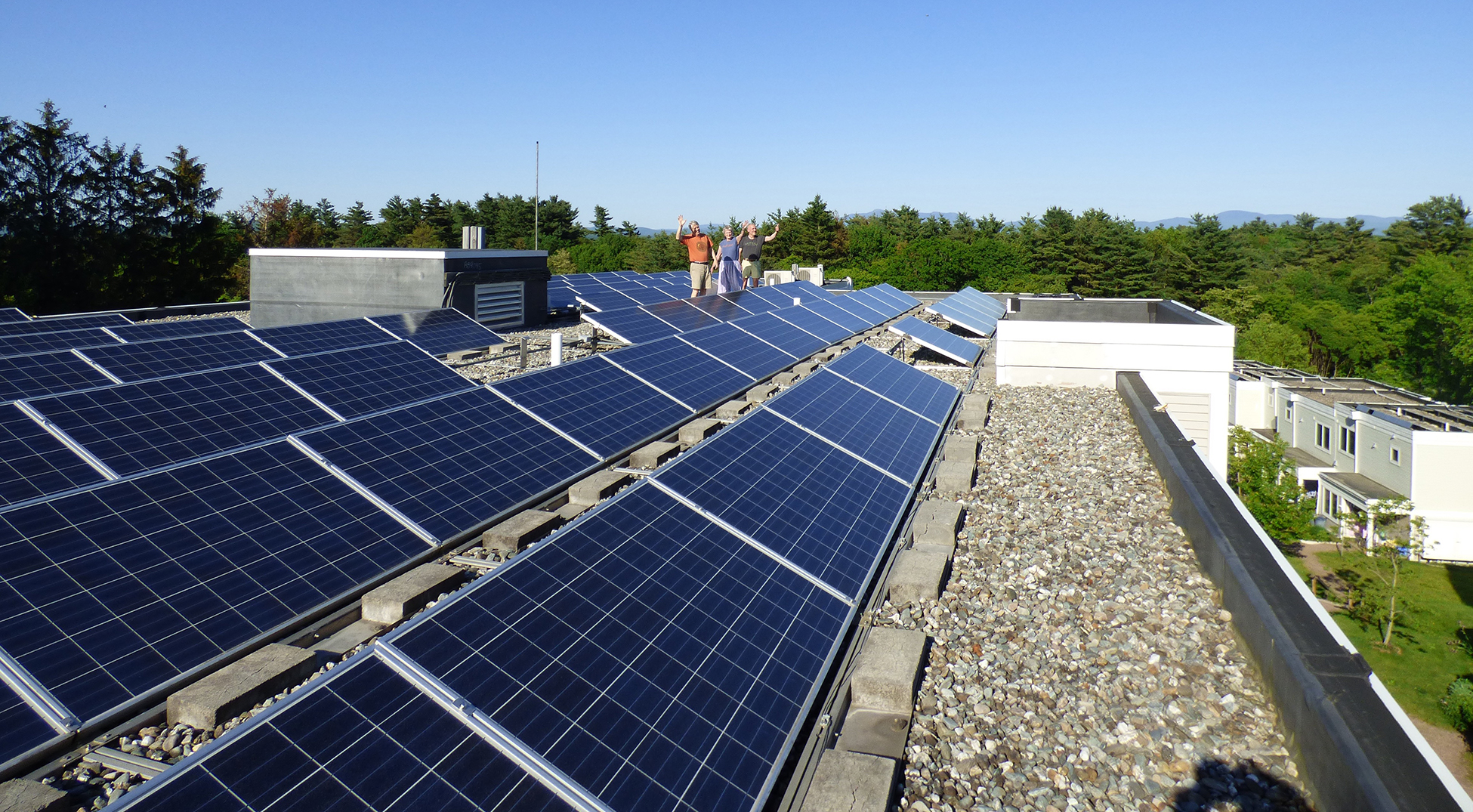
Environmental Stewardship at Burlington Co-housing East Village
Our residents are environmentally conscious in their daily activities, and our community was designed with sustainability in mind. We believe that all of us should be aware of the resources that we consume and actively do our part to conserve through recycling, reusing, and repurposing, wherever and whenever possible.
Our dwellings, while comfortable, and replete with all the usual amenities, are more compact in square footage than the typical sprawling “bigger is better” subdivisions of today. Our style of living is attentive to using less — less energy, less water, and less “things” — thereby minimizing our environmental impact and leaving a smaller environmental footprint. Our community maximizes our space utilization by offering extensive common facilities shared by all. Because of our central location in Burlington, our residents often choose to walk, bike, or take public transportation in lieu of driving. Our buildings are clustered together so that we retain shared undeveloped open space, including a community organic garden. In short, we collectively do our best to live by the philosophy that a smaller ecological footprint actually enhances our standard of living. By consuming less, we spend less, and as a result, enjoy a smaller economic footprint while still maintaining a high quality of life.
Here are some ways that we continue to move towards a smaller ecological footprint. To be sure, our conservations efforts are a work in progress, and we are always looking to introduce new and better conservation efforts.
Sustainability through Building and Property Design
- By optimizing open space on our 5 acres of property, consolidated 32 residential units into six buildings
- Individual units are modest in square footage, thereby reducing residents’ energy costs
- Reduced energy used for heating by designing in passive solar and by using extra wall and window insulation
Efficient Energy Usage
- Reduced energy usage through a common heating and hot water system for 30 units (averaging less than $50 /month/unit)
- Reduced water and energy usage through a shared laundry facility with washing machines and driers
- Reduced energy for lighting by using LED lights
- Reduced electricity use in heating by switching to variable speed pumps
- 113 solar panels generate 31 MWH of solar energy annually for our common use areas
- 121 solar panels generate 37 MWH of solar energy annually, reducing utility bills for those families who participated in their purchase
- Reduced water consumption by using low flow water lines and shower heads
- Using the sun and wind to dry our clothes outdoors on clothes lines
- Using less energy by growing food in our community garden that yields a good portion of the delicious, fresh produce used in our common meals
- Using less energy by cooking common meals shared by an average of 12 to 20 families that are scheduled 10 or 11 times throughout each month
Composting, Recycling, Water Collection, and “Living off the Land”
- Composting all our common and individual family food waste and improve our garden soils as well as a rainwater collection system to minimize water usage
- Recycling 90% or more of our potentially recyclable materials
- Less energy usage by obtaining food from our many fruit trees and bushes maintained on our property
- Gathering unwanted surface water and send it to two collecting ponds where the water drains slowly through sand deep into the ground
- Saving transportation energy and harmful emissions by sharing cars and encouraging residents to use electric cars
See how much power we generate for our indoor common spaces.
See how much power individual solar panel owners generate.
